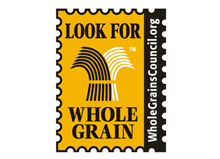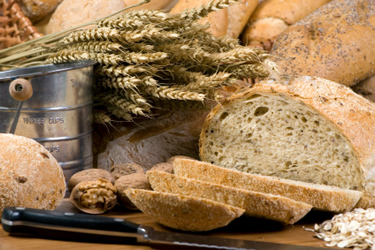Written by Sylvia Geiger MS, RD, CD, Price Chopper Community Nutritionist
As I was making a sandwich for my daughter’s lunch (I know— she’s a high school senior and should do it herself), I remembered that it wasn’t too long ago when “bread” meant only plain white bread. Thankfully, things have changed and grocery stores now have many whole grain bread selections. More importantly, people are purchasing them; last year was the first year Americans bought more whole grain bread than white bread. This is truly a good thing, because whole grains offer better nutrition; they’re full of fiber, minerals and vitamins that are removed when grains are refined. According to many studies and the Whole Grains Council, the benefits of whole grains most documented by repeated studies include:- stroke risk reduced 30-36%
- type 2 diabetes risk reduced 21-30%
- heart disease risk reduced 25-28%
- better weight maintenance
- reduced risk of asthma
- healthier carotid arteries
- reduction of inflammatory disease risk
- lower risk of colorectal cancer
- healthier blood pressure levels
- less gum disease and tooth loss
- Read the ingredient list. The first ingredient should say whole wheat or another whole grain.
- Use the NuVal scores as a guide. Whole grains foods score higher than refined grain foods. The higher the NuVal score for breads, pastas and starches—the better the nutrition. But note that some whole grain foods score better than others because they have less added salt or sugar.
- Try a bread or pasta made with “white whole wheat” flour. These foods are made with a wheat variety that tastes similar white flour, yet it’s a whole grain.
- Don’t be fooled by misleading front label claims such as “whole grain” or “whole wheat.” These terms have no FDA definition. You have to read the ingredient list to be sure it’s a whole grain or use the 100% Whole Grain Stamp from the Whole Grain Council.

- The 100% Stamp assures you that a food contains a full serving or more of whole grain in each labeled serving and that ALL the grain is whole grain, while the basic Whole Grain Stamp appears on products containing at least half a serving of whole grain per labeled serving.
- Aside from the whole grain stamp, many cereal & bread companies note the number of grams of whole grains on their label. For breads it’s typically the 8 grams per serving, but some brands may have 13 to 36 grams.
- Visit the Whole Grains Council site for a complete listing of foods that have the voluntary whole grains stamp.
- Ingredients such as enriched flour, degerminated (on cornmeal), bran, and wheat germ are terms to describe refined grains—not whole grains.
Whole Grain Ideas for Busy Schedules
Bacony Barley Salad with Marinated Shrimp or
[slideshow]

